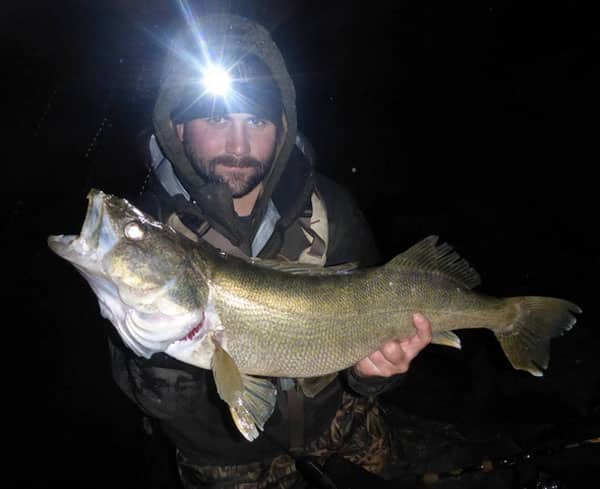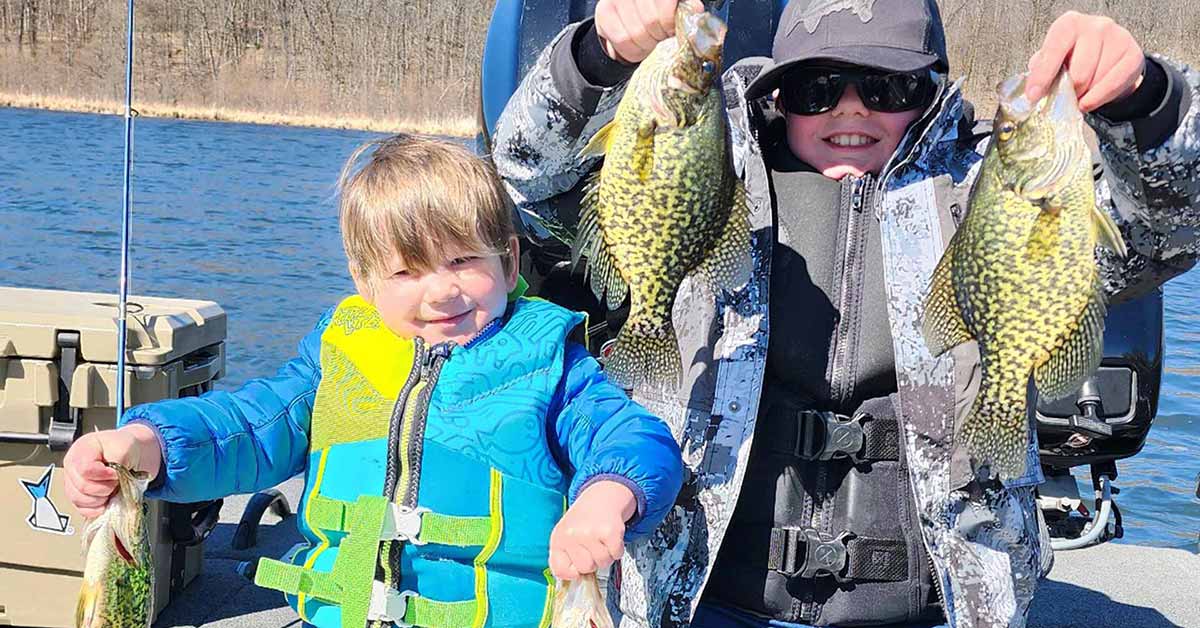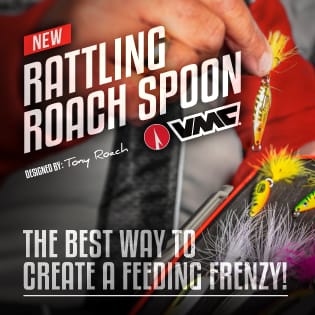Wading for walleyes is one of the best ways to catch fish in the spring in the fall. I’m the last one to complain about unseasonably warm weather. But the way the El Nino’s tropical weather pattern is hanging on, it may be awhile before most folks are able to venture out on safe ice. A nice problem to have! And fortunately, one with a simple, short-term solution to tide you over during this year’s extended transition from open-water angling to ice fishing. Especially if you’re after some of the largest walleyes of the year.
During times when you can neither float your boat, nor tippy-toe across the first 4 inches or so of solid new ice, the best option is to slip on your insulated waders and execute a little shore patrol exercise, beginning shortly before dusk and extending an hour or two after dark. You can remain later if you choose, of course, bolstered by a thermos of hot coffee and a few layers of sufficiently warm clothing to keep the chill at bay.
At this time of year, the best places to get your feet wet are bottlenecks that force walleyes to come to you, rather than you having to roam far and wide to contact them. Like creek and river mouths, where inflowing current draws both baitfish and walleyes shallow at night. Gauntlets like narrows, where current flushes between two adjacent bodies of water. And riprap along dams and causeways, where the sloping rock face quickly drops into fairly deep water, tempting nearby walleyes to shift shallower under cover of darkness.
In some cases, you may not need waders for night fishing; where the water is several feet deep right up to the shore, walleyes may swim right up to you, trapping baitfish against the wall-like shoreline. Steep-sloping riprap is another option; just be careful when scrambling along and across boulders in the dark.
In areas with more gently-sloping shorelines, you usually need to wade out a bit, into 2 or 3 feet of water, to reach fish with your cast. Exercise caution, however: There’s no need to wade out much deeper, to within a couple of inches of your wader tops. You don’t want a sudden wave sloshing frigid water down your long johns.
Walleyes are quite adept at seeing their surroundings at night; man is not. So keep things simple: a 7-foot medium-action spinning rod spooled with about 10-pound-test monofilament, a pocketful of lures, and not much else.
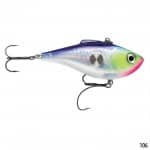
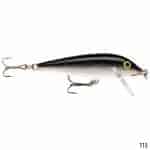
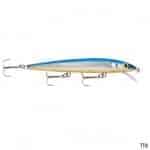
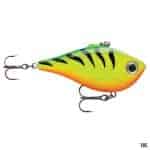
Cast neutrally-buoyant minnowbaits like #12 or #14 Rapala Husky Jerks out into the darkness, retrieving them back at a slow, fairly steady gait. Occasionally pump the rod tip to surge and then briefly pause the lure, but don’t overdo it. Erratic retrieves only make it harder for walleyes to zero in on your bait.
Cast and swim ¼-ounce jig & soft plastic combos, like a VMC Moon Eye Jig tipped with a 4-inch boot tail, like a Big Bite Shad or Swimming Jerk Minnow. Use a steady retrieve to make the paddle tail thump, vibrating the body to make it easy to locate and catch.
If the wind is pouring in, pounding the area with waves, don’t wade out quite as far; fish should come shallower to you. Try casting a weighted rattle bait like a Rapala Rippin’ Rap or Clackin’ Rap, both of which are heavy and easy to cast into an inshore wind. Plus, they make a lot of noise amidst the surrounding turbulence. In calmer conditions, try a quieter bait like a Countdown 09; just don’t let it sink enough to snag bottom before you begin your retrieve. Remember, walleyes strike free-running baits at night, so you don’t necessarily have to bump cover or bottom to trigger strikes.
The general rule for all lures is not to worry about fancy color patterns; walleyes see profiles, not exact patterns at night. Black or blue backs on silver crankbait bodies are fine. So are monotone soft plastics. Experiment, however, with baits that glow in the dark: glow softbaits or cranks with a touch of phosphorescent paint. Shine a light on them every so often to recharge their glow. Couldn’t hurt. Might just help.
For support gear, bring along a headlamp, landing net, wading staff if you have one, pliers, nail clippers, cellphone/camera, rope stringer if you plan on keeping a fish or two, and perhaps one other equally crazy fishing buddy to keep you company, ensure each other’s safety, and to net your fish. Let someone back home know where you’re going, and when you expect to be back—unless the big ‘eyes are really biting. Then, you might opt to sacrifice a little beauty sleep in exchange for golden beauties on the line. Remember to call home to tell them the walleyes are biting, and not to wait up for your arrival unless, of course, they like to clean fish.
